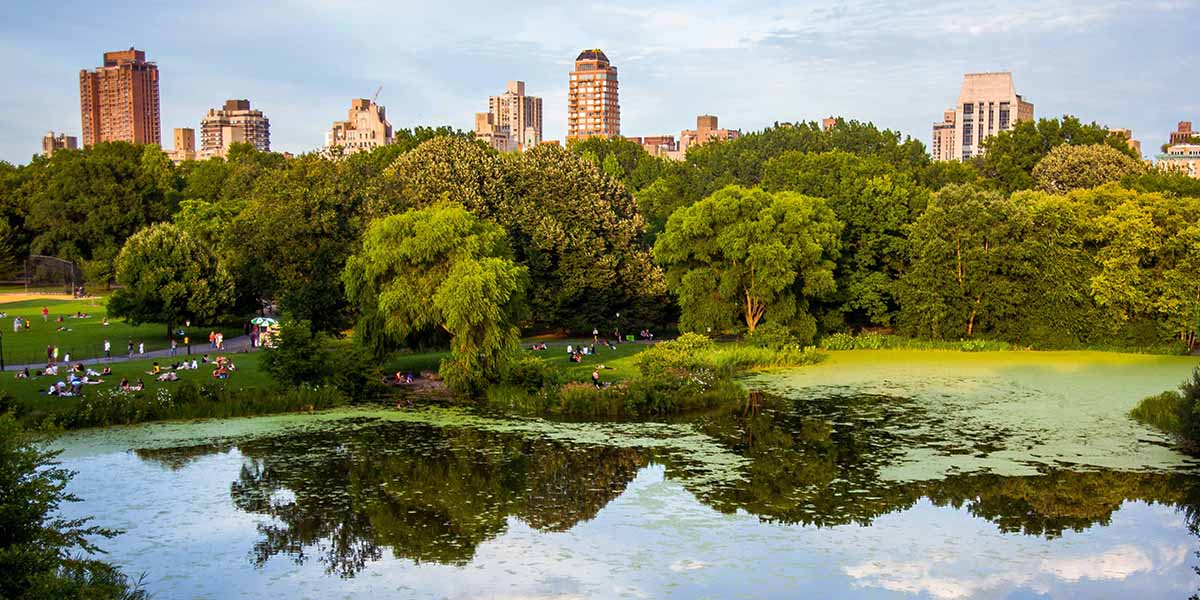Eutrophication is a phenomenon of growing concern in terms of water quality. It occurs when bodies of water, such as lakes and rivers, receive an excessive amount of nutrients, mainly nitrogen and phosphorus, from sources such as fertilizers, agricultural waste, and atmospheric pollution. This increase in nutrients can cause problems such as oxygen depletion (hypoxia) and the proliferation of harmful algae, including cyanobacteria that produce toxins (harmful algal blooms). Both problems have a negative impact on aquatic ecosystems and water quality, with serious consequences for organisms that depend on these bodies of water. In this article, we will take a look at the understanding and assessment of eutrophication levels and their current development, as well as the causes and effects associated with this phenomenon in your lake or body of water.
Causes and accelerators of eutrophication
Before delving into measurement methods, let’s first understand what leads to eutrophication. Human activities such as intensive agriculture, cropping, livestock farming, industrial processes, and population growth have significantly increased the flow of nitrogen and phosphorus, as well as phosphates and other nutrients, into our environment. These additional nutrients act as fuel for the growth of algae and aquatic plants, setting the stage for the eutrophication process by enriching water bodies.
Measuring eutrophication is no easy task, given the intricate network of interactions within aquatic ecosystems and the particular situation of each body of water, such as lakes and reservoirs. However, several indicators help us measure its extent:
Key indicators for measuring eutrophication
Nutrient levels: Nutrients such as total phosphorus (P), orthophosphate, total nitrogen (N), and nitrate (NO3-) are the main elements we measure. High levels of these nutrients, coming from sources such as agricultural waste, excrement, and detergents, create favorable conditions for algae proliferation, altering the balance of the ecosystem and affecting water quality.
Dissolved oxygen: Oxygen is life for aquatic creatures, and eutrophic waters are known for their fluctuating levels of dissolved oxygen. The reason is simple: algae consume oxygen. When algae populations increase, they can deplete oxygen levels, posing a serious threat to fish, animals, and other aquatic organisms.
Chlorophyll-a concentration: Chlorophyll-a (Chl a) concentration serves as an indicator of algae content in water. Algae, like terrestrial plants, depend on sunlight and oxygen to grow, and chlorophyll-a plays a key role as a photosynthetic pigment.
Biological water quality: This parameter assesses water quality based on the presence and abundance of aquatic species, with a focus on fish. Fish populations are reliable indicators of environmental health, given their relatively long life span and sensitivity to changes in the ecosystem.
Key ingredients of eutrophication
Now let’s imagine that our lake is a big kitchen and we’re trying to figure out what’s cooking in it. Here are a couple of key ingredients related to excess nutrients entering the aquatic ecosystem:
Total phosphorus concentration: Phosphorus is like the secret sauce for algae and underwater plants. In some lakes, phosphorus is quite scarce, and these lakes are called oligotrophic. They are known for their crystal clear waters and may not have many fish, but the ones they do have are often large and special. The source of phosphorus can be phosphate discharges and organic matter coming from the surrounding land.
Measuring nitrogen levels: Nitrogen is like the second chef, helping algae and plants to grow. It comes from various sources, such as rain, farms, wastewater treatment plants, and even the fertilizer on our lawns. The use of nitrogen fertilizers contributes to the increase of this nutrient in water bodies, facilitating the proliferation of microorganisms.
Trophic states and ecological balance
Trophic state of lakes versus nitrate-nitrogen levels: Think of the trophic state as the recipe for our lake. It is determined mainly by total phosphorus and chlorophyll-a levels. But don’t forget the role of nitric nitrogen, which can influence the dynamics of your water body. Trophic status can be broken down as follows:
- Oligotrophic (< 0.3 mg/l NO3-N): Oligotrophic lakes are like the virgin forests of the aquatic world. They have low nutrient levels, clear waters, and minimal weed or algae growth. Although they may not be the richest in fish, they often have a unique and thriving ecosystem.
- Mesotrophic (0.3 – 0.5 mg/l NO3-N): These lakes are in the middle, with moderate levels of nutrients. They are not as clear as oligotrophic lakes, but they strike a balance between water quality and the maintenance of diverse aquatic life.
- Eutrophic (0.5–1.5 mg/l NO3-N): Eutrophic lakes are like lively neighborhood ponds. They have higher nutrient levels and are prone to weed growth and frequent algae blooms. They are usually full of fish, but beware of oxygen depletion in shallower areas.
Hyper-eutrophication and ecological balance control
- Hyper-eutrophic (> 1.5 mg/l NO3-N): Hyper-eutrophic lakes are the life of the party among bodies of water. They are packed with nutrients, causing excessive weed growth and endless algae blooms. Oxygen depletion is a major problem in these lakes, which can lead to problems for aquatic life.
Remember that nitrate-nitrogen levels can vary greatly from lake to lake, depending on their nutrient sources and local conditions. Monitoring both nitrogen and phosphorus levels is key to maintaining water quality.
Knowing and measuring the eutrophication levels of our lakes or bodies of water is essential for their long-term health. By observing nutrient levels, dissolved oxygen, chlorophyll-a concentrations, and the creatures that live in the water, we can get an idea of what is happening in our aquatic ecosystem and thus seek appropriate solutions to prevent the negative impact of this phenomenon.
